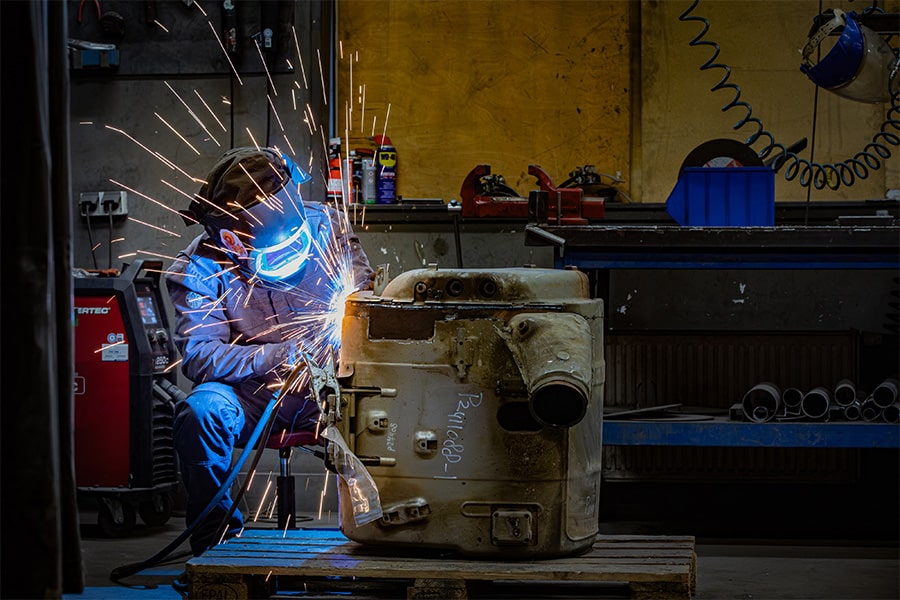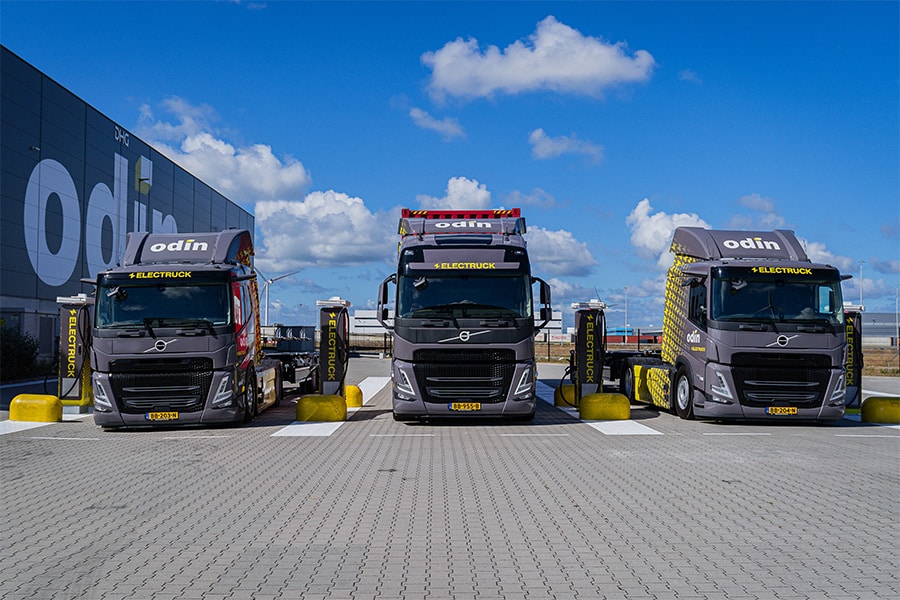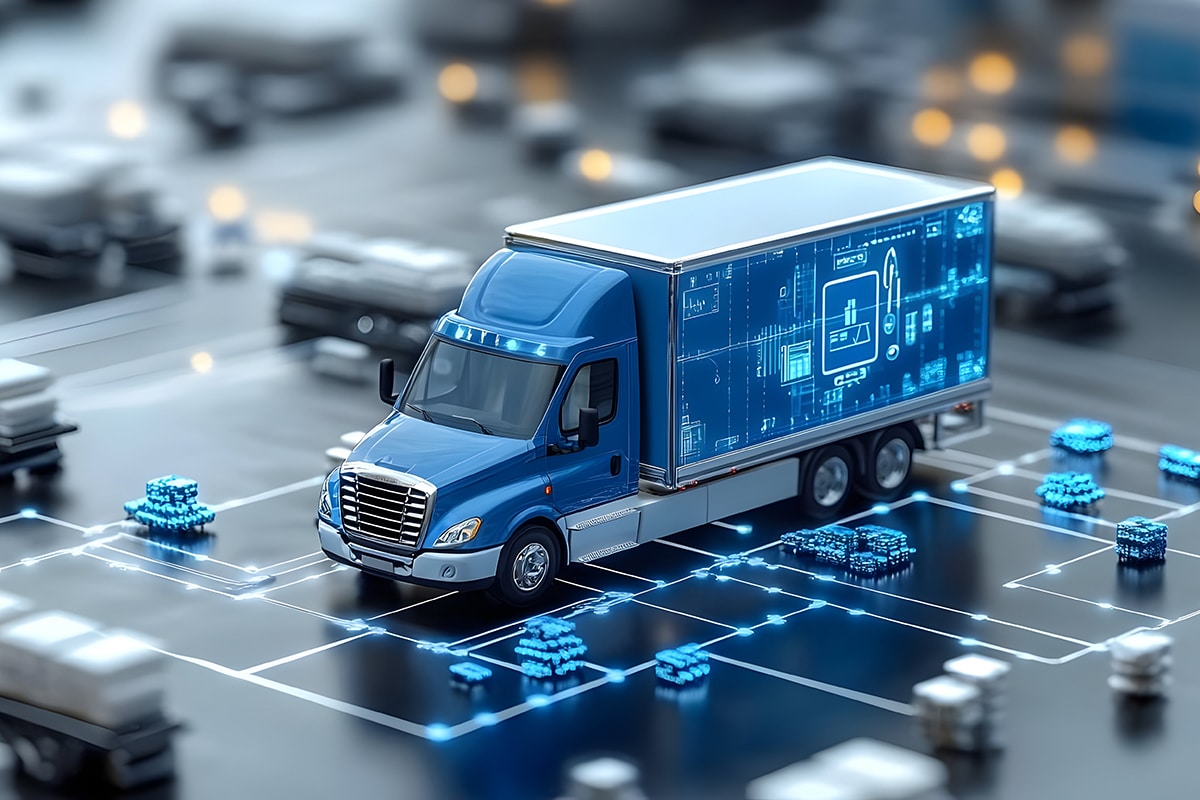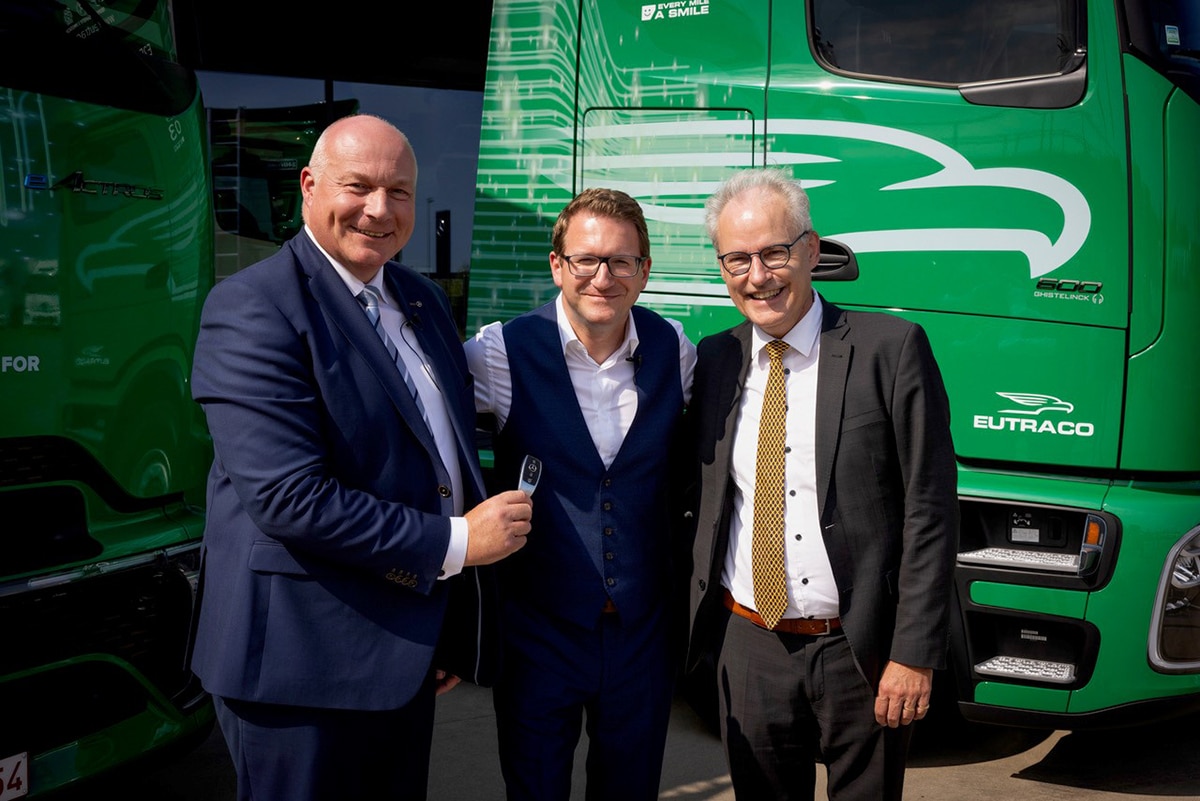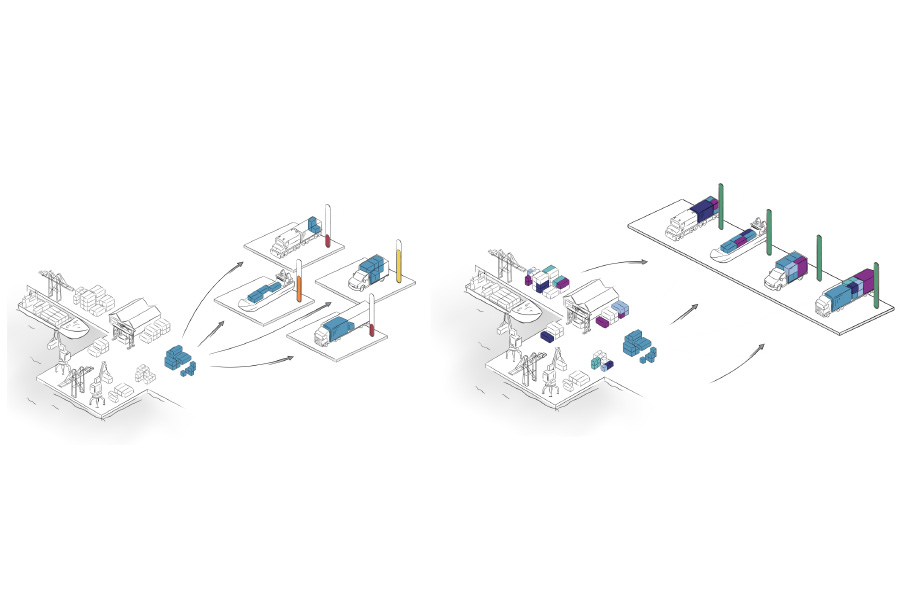
More efficient and sustainable multimodal freight transport thanks to Physical Internet
The transportation and logistics sectors are invaluable to our daily lives. They get food, equipment and materials to the right place every day. And they are growing, due to booming e-commerce. Yet transportation flows are not always done in the most efficient way. And the road to greener transportation is also still long. With the PILL project, imec, VIL and the VUB are joining forces since 2021 to organize logistics processes digitally smarter via a physical internet.
Did you know that 20% of trucks on European roads are simply transporting air? So say figures from Eurostat*. Moreover, it appears that much freight traffic follows the same route without making full use of the capacity of deliveries. Because each transport company uses its own planning method, cooperation is difficult, which drives up the number of deliveries.
There is also a long way to go in terms of greener traffic. Much freight traffic is handled by trucks, while the use of more environmentally friendly modes of transportation, such as inland waterways and rail, remains steady. In the article just before this, you can read about how truck builders are beginning to roll out electrification of trucks, but this too is a long-term work.
Efficient from origin to destination
The Physical Internet aims to better organize the transport of goods by suggesting the optimal route in overlapping transport networks, regardless of transport type. At the same time, this solution can facilitate the shift to more sustainable transportation.
How? By bringing the concept of the digital Internet to the transportation sector. "In the same way that an e-mail uses the full network capacity to go from sender to receiver, goods should use the full capacity of the infrastructure," said Joris Finck, innovation manager at research center imec. "When you send an e-mail, it doesn't matter which provider or which device you use. In principle, that's how it should work to take goods from origin to destination. That would ensure, for example, that congested traffic on freeways could be avoided by diverting freight via water or railroads."
New opportunities through synchromodality
Today's challenges in the logistics sector require a modified way of working. "The Physical Internet aims to improve underutilization of capacity and other inefficiencies by connecting transport networks and transporting goods in the most optimal way from origin to destination," confirms Joris. "Crucial to this is the concept of synchromodal transport. That means you use different transport modes flexibly, offering the shipper an integrated solution to get goods from point A to point B."
"Synchromodality is akin to multimodality (the use of different modes of transportation), but supplemented by contextual information. That way you can make the best transportation choice based on real-time information. For example, if the water level is too low, a container is redirected to truck or train traffic. If there is a traffic jam, containers are transferred to barge or rail."
Shift to more sustainable transportation
"We are also looking at the development and realization of the Physical Internet to enable the shift to more sustainable transport in the future. And that will be necessary, because the European Commission expects freight transport to increase by some 30% by 2030, and even by just over 56% by 2050 (compared to 2015). If that increase also ends up on the road, the situation in Flanders will become untenable," says Joris.
"Making all trucks electric only solves part of the puzzle, as there will still be a huge amount of freight traffic via road. Better integration of transportation modes, connecting road traffic with rail and waterways, is necessary."
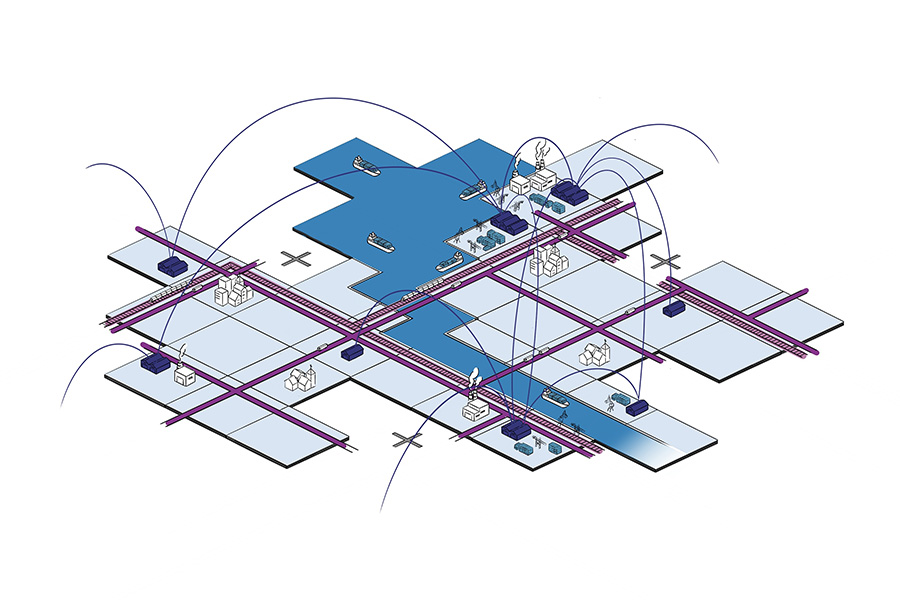
PILL project as facilitator
The Physical Internet Living Lab (PILL) project, a partnership of imec, VIL and research group Mobilise of the VUB, started in early 2021. The Agency for Innovation and Entrepreneurship (VLAIO) provides financial support for this project, which runs until the end of 2024 and focuses on the port ecosystem.
Joris outlines what has already been realized today: "On the Antwerp-Genk corridor we have created a Physical Internet, where container transport is multimodal. Since the start of the project, we have gathered about 25 carriers and shippers. We asked them to realize a number of logistics transactions for their spot market. For now, the results are still quite limited, with the acceptance of about three routes, but this is already enough to demonstrate the potential of the concept."
Looking for external parties
In the project, imec acts as a kind of game-changer. "Important to know, is that imec is not a software platform here, but offers the key to get started in a connected environment. So each participating party remains the owner of its own data. By the way, we are looking for plenty of additional parties to further develop and commercialize the concept."
And Joris adds, "The PILL project is not an ad hoc initiative. On the contrary. The European Commission's Directorate General for Mobility & Transport is working with its member organization ALICE (Alliance for Logistics Innovation through Collaboration in Europe)** to help shape and support the project." ■
* Source: A fifth of road freight kilometers by empty vehicles. Eurostat, Dec. 10, 2021.
** www.etp-logistics.eu
